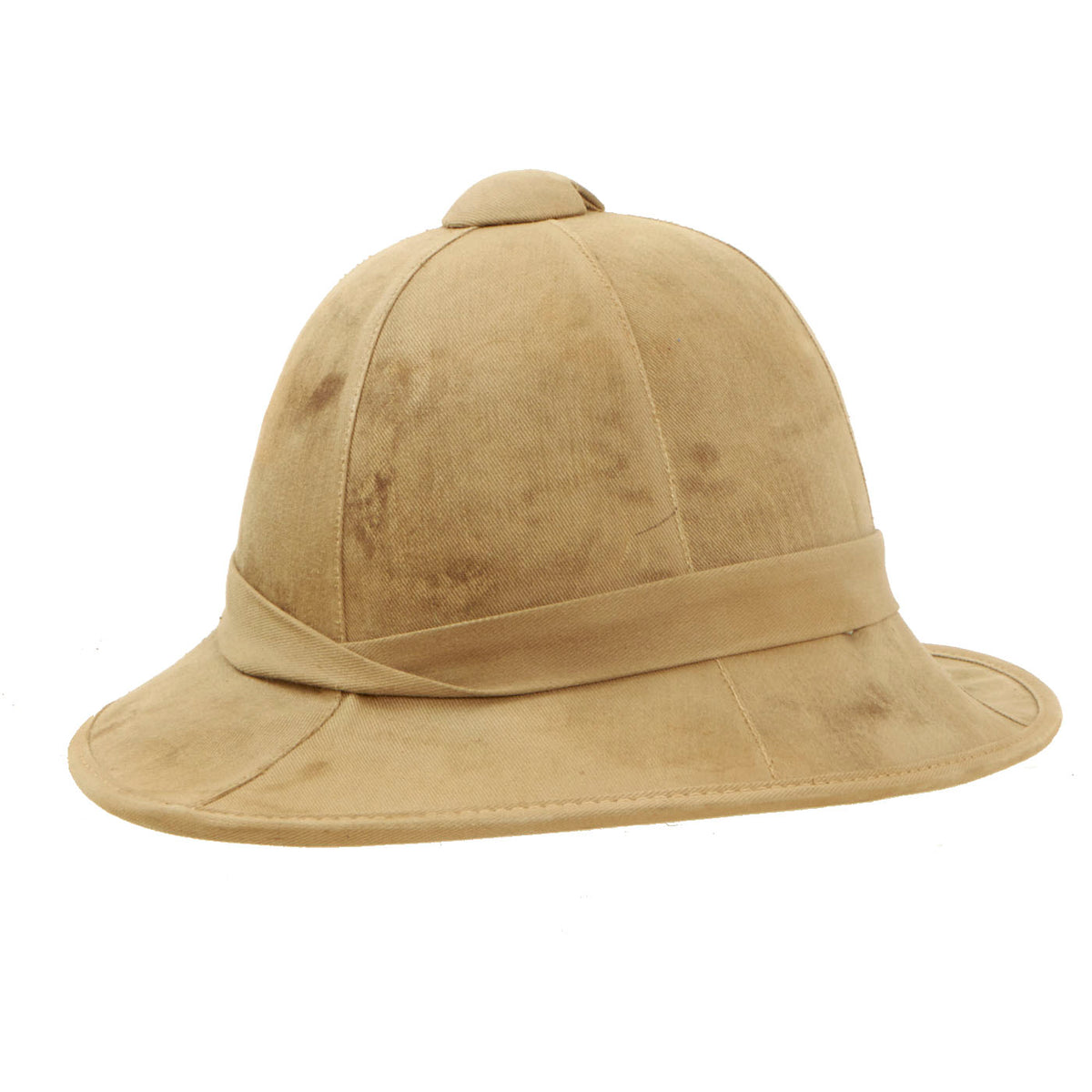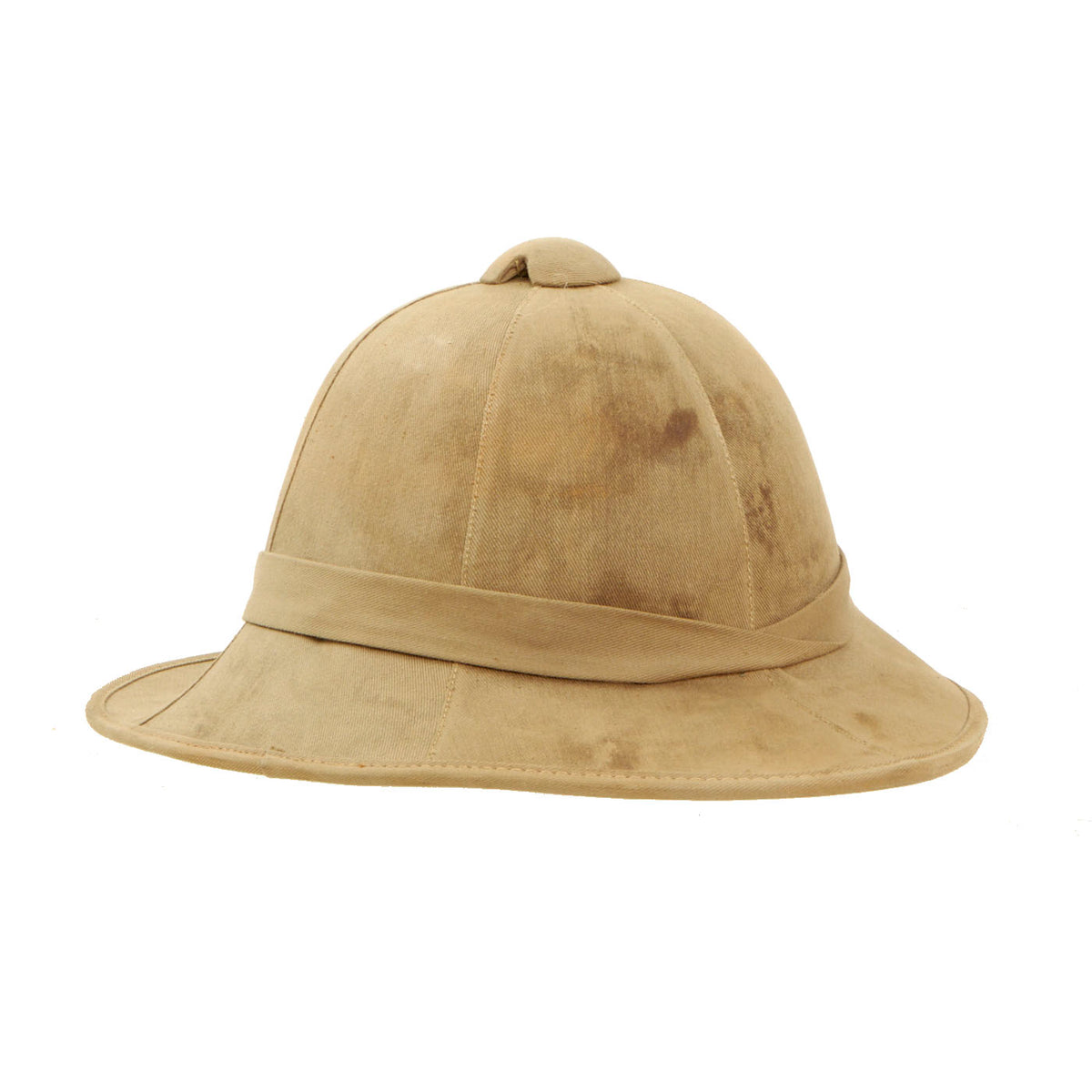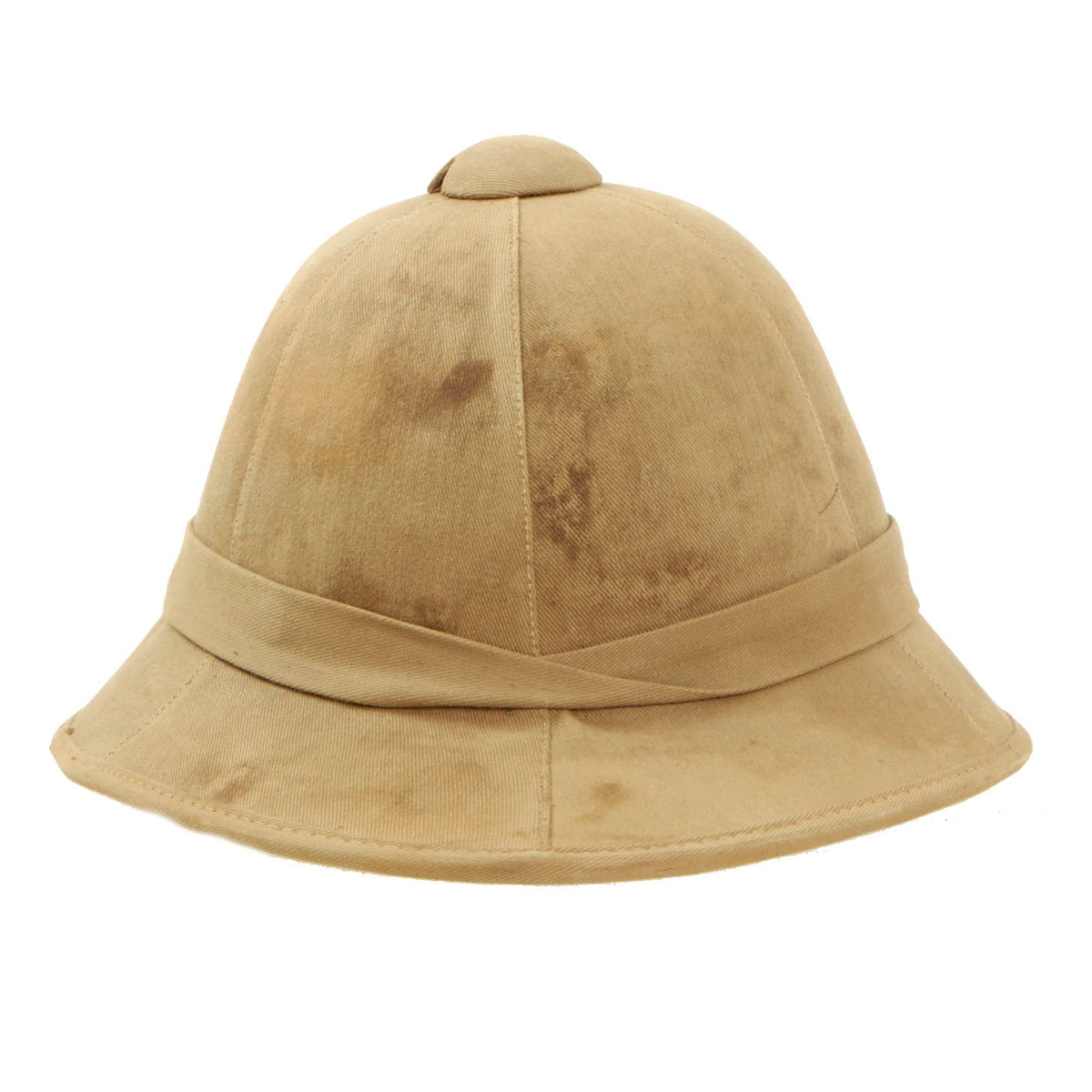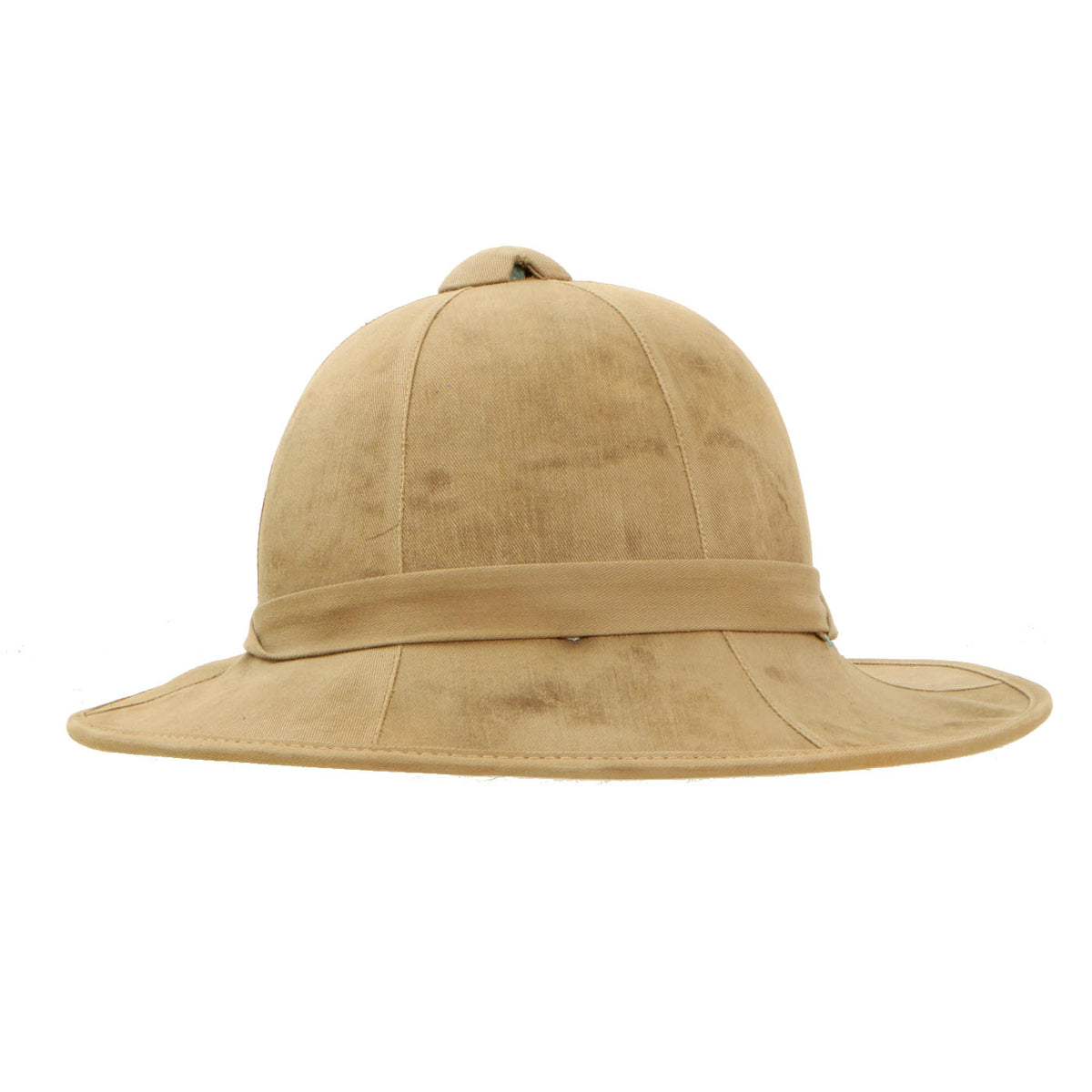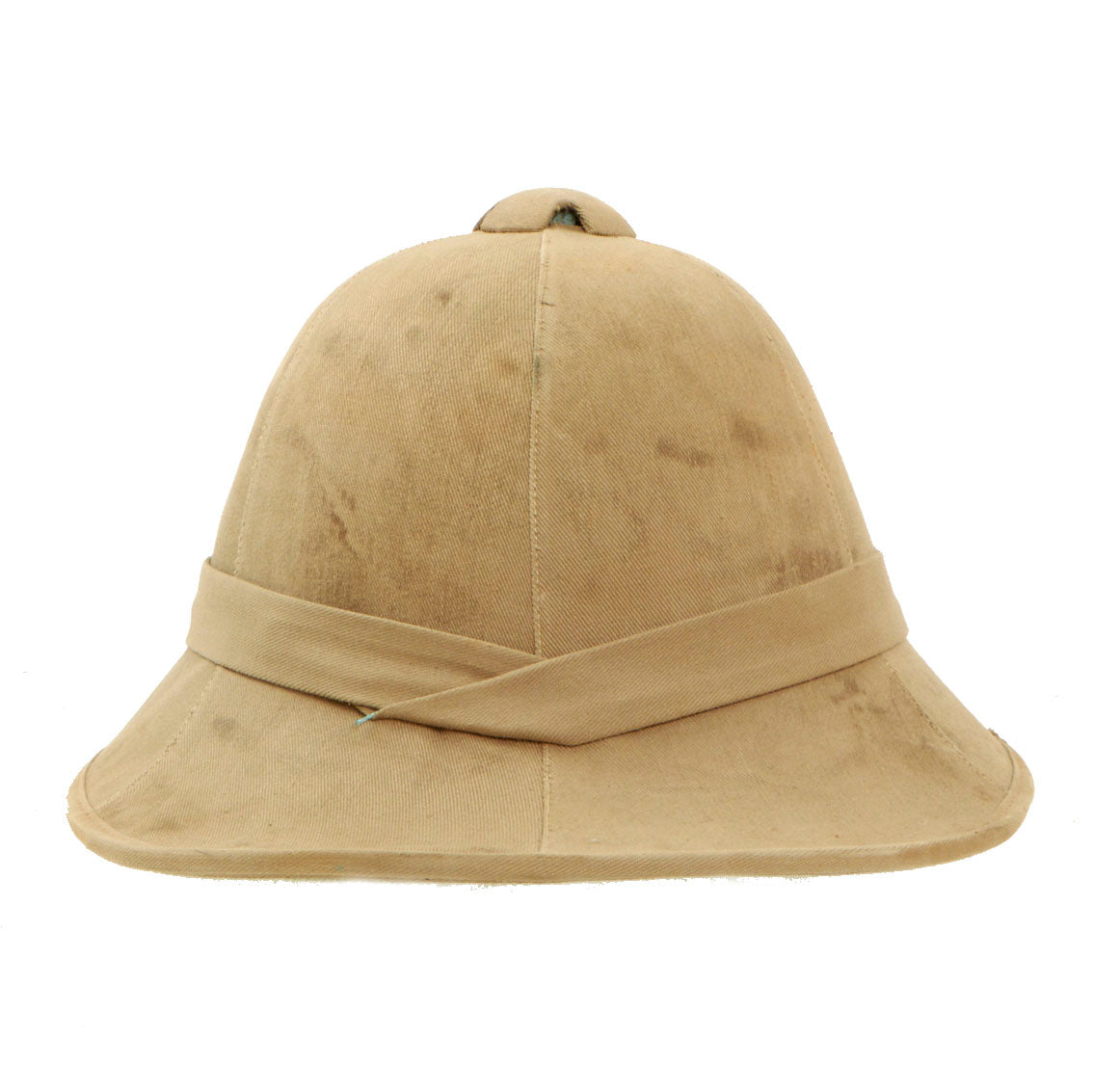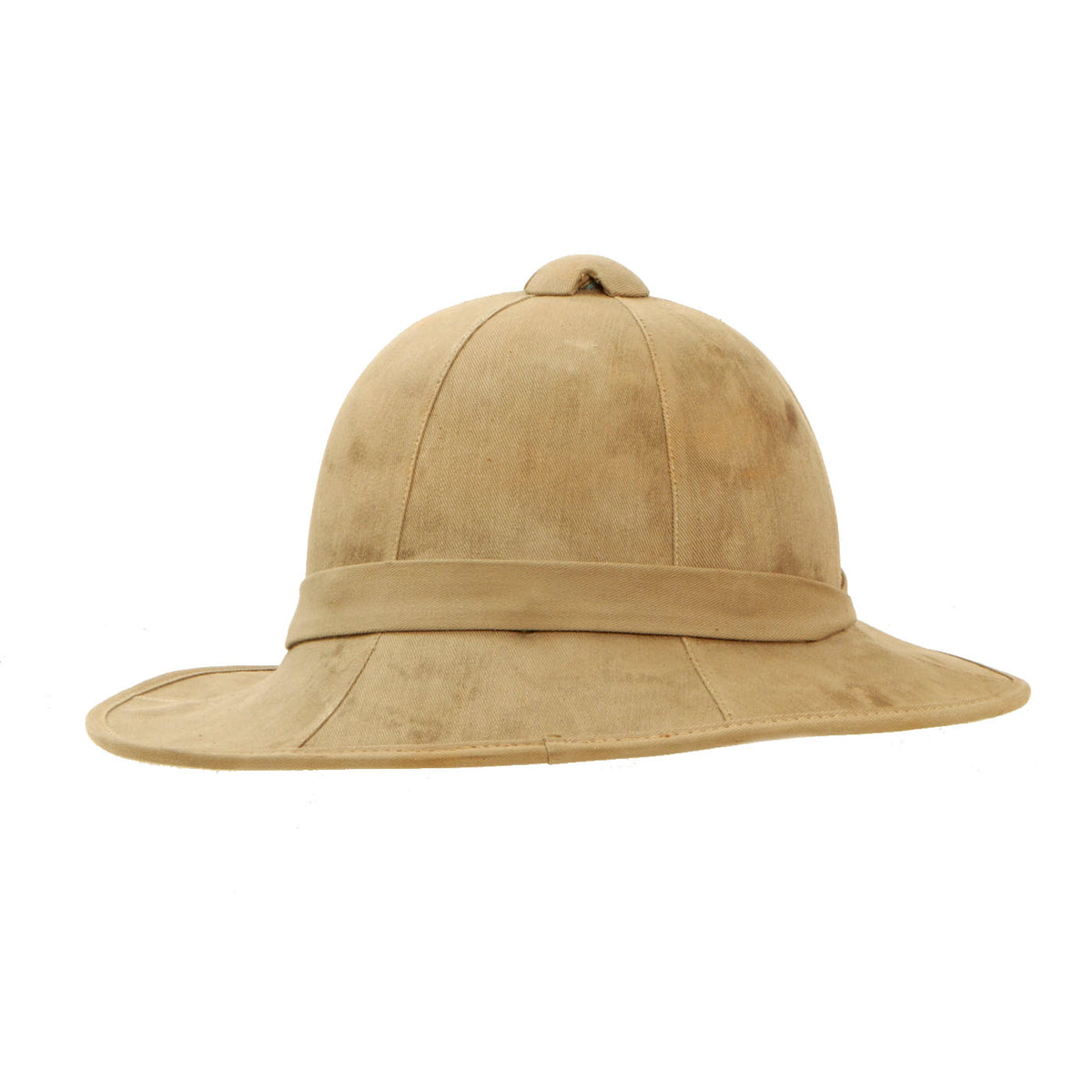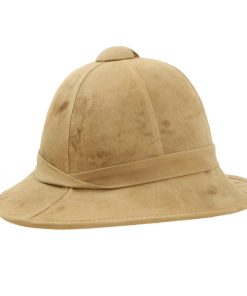Original British WWII Wolseley Pattern Pith Sun Helmet BY Failsworth Hats Ltd – Dated 1942 Original Items
$ 250,00 $ 100,00
Original Item: Only One Available. This is a very nice example of a WWII “Wolseley” Pattern British Pith Helmet in a size 6 ⅝. The Wolseley pattern helmet is a distinctive British design developed and popularized in the late 19th and early 20th century. It was the official designation for the universal sun helmet worn by the British Army from 1899 to 1948 and described in the 1900 Dress Regulations as “the Wolseley pattern cork helmet”. With its swept-back brim it provided greater protection from the sun than the old Colonial pattern helmet, and its use was soon widespread among British personnel serving overseas as well as some Canadian units.
This example is broad arrow marked and displays the following on the inner leather sweatband:
Failsworth Hats were established in 1903 as ‘The New Failsworth Hat Manufacturing Company,’ designing and making hats for both men and women, from their base at the ‘Maypole Hat Works’ in Failsworth, Manchester in the UK. In 1940 the company changed its name to ‘Failsworth Hats Ltd’. When the Second World War began, the production of normal headwear was restricted and Failsworth Hats made hats for the military, including leather helmets for the RAF.
The condition of the helmet is about what you would expect a service worn sun helmet would look like. There is fading on the outside fabric, as well as minor staining. There appears to be no damage to the fabric and all stitching is intact. Unfortunately, the chinstrap is missing completely from the helmet, however, the J-Hook bales are still present if you wish to add a replacement chinstrap.
This is a beautiful example of a genuine service worn Woseley pith helmet used by the British Armed Forces during WW2. Comes ready to display!
Pith helmet
The pith helmet also known as the safari helmet, sun helmet, topee, sola topee, topi, salacot, or salakof, is a lightweight cloth-covered helmet made of sholapith. The pith helmet originates from the Spanish military adaptation of the native salakot headgear of the Philippines.
It was often worn by European travelers and explorers, in the varying climates found in Southeast Asia, Africa, and the tropics, but was also used in many other contexts. It was routinely issued to European military personnel serving overseas in hot climates from the mid-nineteenth to the mid-twentieth century.
Fast Shipping with Professional Packaging
Thanks to our longstanding association with UPS FedEx DHL, and other major international carriers, we are able to provide a range of shipping options. Our warehouse staff is expertly trained and will wrap your products according to our exact and precise specifications. Prior to shipping, your goods will be thoroughly examined and securely secured. We ship to thousands clients each day across multiple countries. This shows how we're dedicated to be the largest retailer on the internet. Warehouses and distribution centres can be located throughout Europe as well as the USA.
Note: Orders with more than one item will be assigned a processing date depending on the item.
Before shipping before shipping, we'll conduct a thorough inspection of the items you have ordered. Today, the majority of orders will be delivered within 48 hours. The delivery time will be between 3-7 days.
Returns
The stock is dynamic and we cannot completely manage it because multiple stakeholders are involved, including our factory and warehouse. So the actual stock may alter at any time. It's possible that you may not receive your order once the order has been made.
Our policy is valid for a period of 30 days. If you don't receive the product within 30 days, we are not able to issue a refund or an exchange.
You can only return an item if it is unused and in the same state as the day you received it. You must have the item in its original packaging.
Related products
Uncategorized
Uncategorized
Uncategorized
Uncategorized
Australian WWII Owen MK1 Machine Carbine SMG Custom Fabricated Replica with Sling Original Items
Uncategorized
Uncategorized
Uncategorized
Uncategorized
Angolan Rebel 1970s era 60mm Inert Display Mortar from Angolan Civil War Original Items
Uncategorized
Uncategorized
Uncategorized
Uncategorized
Uncategorized
Uncategorized
Uncategorized
Uncategorized
Band of Brothers ORIGINAL GERMAN WWII Le. F.H. 18 10.5cm ARTILLERY PIECE Original Items
